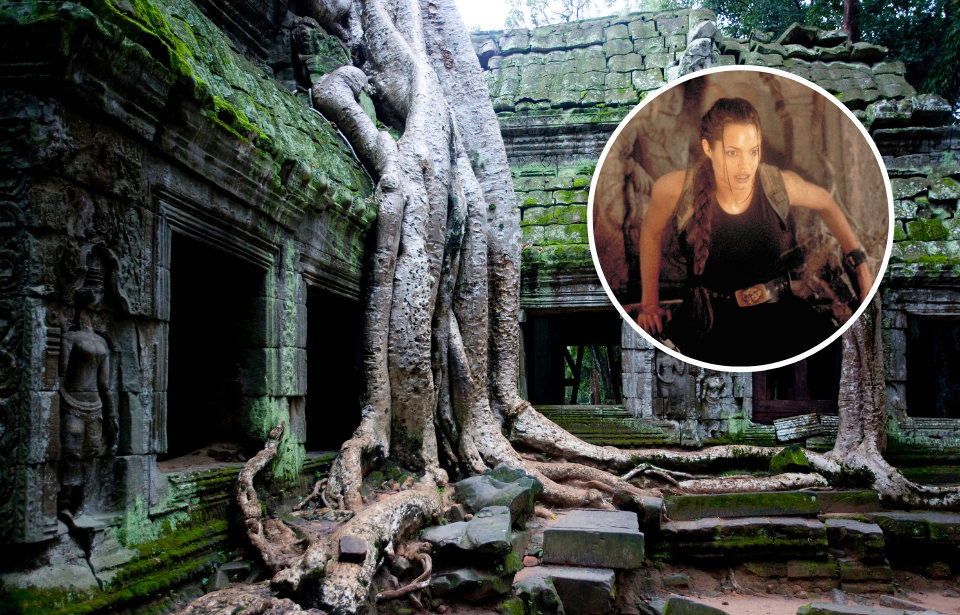Ta Prohm, originally known as Rajavihara, is a temple located at Siem Reap, Cambodia, as part of the Angkor Wat complex. It was listed as a UNESCO World Heritage Site in 1992, remaining in the same state in which it was found during the 20th century. The forces of nature have proven their strength, as the jungle has almost completely taken over the temple.
Construction of Ta Prohm
Construction on the Ta Prohm temple began in 1186 as part of the Angkor Wat complex. It was commissioned during the height of the Khmer Empire by King Jayavarman VII, who dedicated it to his family. It became one of the first temples of his prolific reign, and was built as a Buddhist monastery and learning center.
The importance of the temple continued long after Jayavarman VII’s reign, experiencing multiple additions and expansions over the centuries.
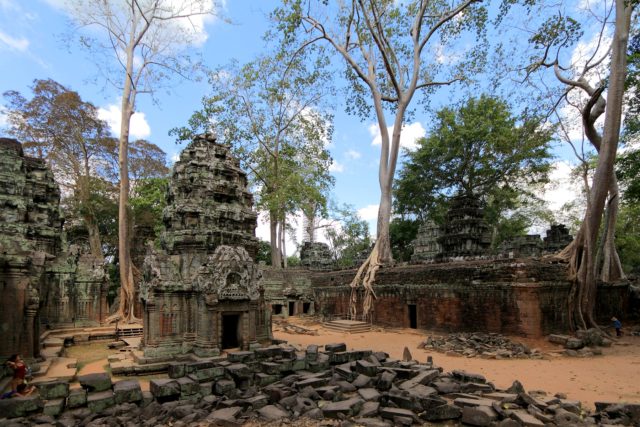
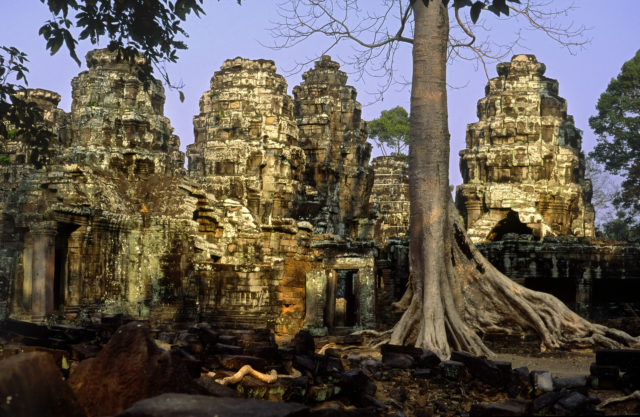
Ta Prohm was built entirely from mortar in the traditional style of the Khmer Empire, consisting of gradually smaller enclosures. The outer wall, of which very little remains, measured 1,000 meters by 650 meters. On each side is a gopura – “face tower” – which are believed to have been added during the 13th century.
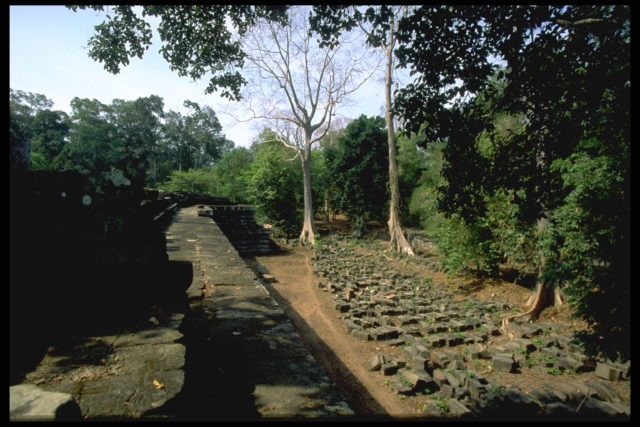
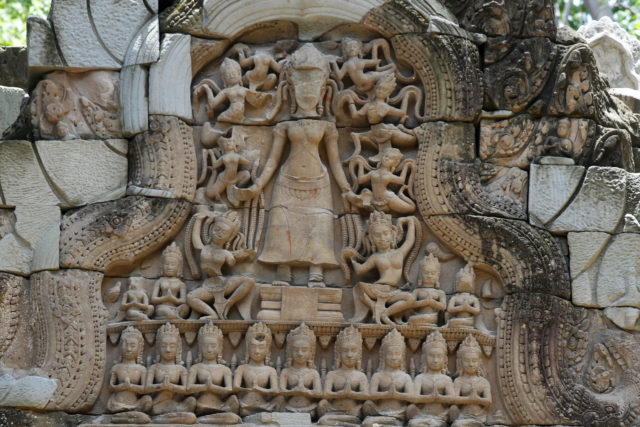
There’s evidence that there were two moats on the property – one on the inside and another outside the outer wall. However, the latter is inconsistent with the temple’s original construction, leading historians to theorize the outer enclosure was expanded sometime after.
Inside the walls of Ta Prohm
The main part of Ta Prohm was intended to represent Prajñāpāramitā, the personification of wisdom, and was modeled after King Jayavarman VII’s mother. The northern satellite temple in the third enclosure was dedicated to his guru, Jayamangalartha, while the southern was dedicated to his older brother.
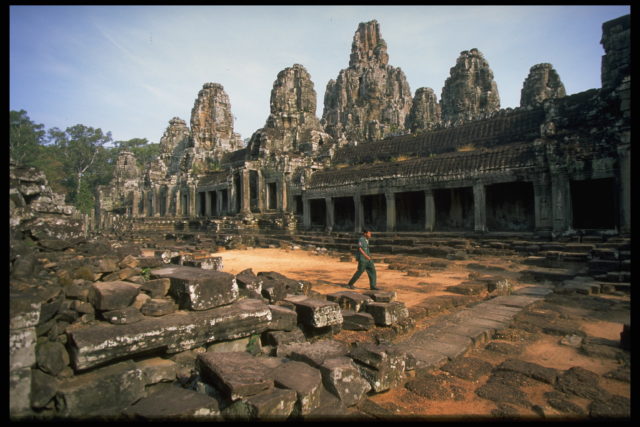
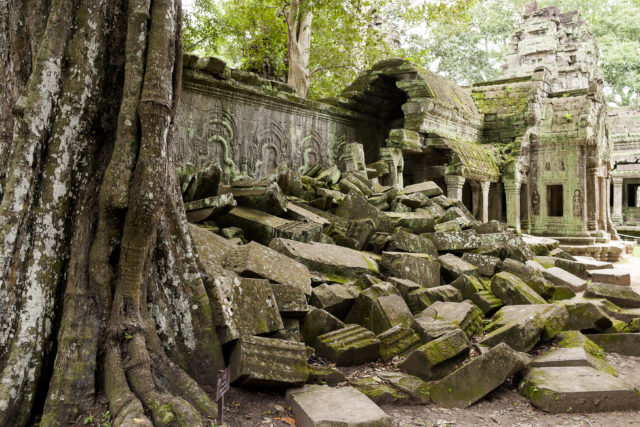
Around 12,500 people lived within Ta Prohm, including 20 spiritual leaders and over 600 dancers. Inside the walls were gallery walkways, a Hall of Dancers, a House of Fire and multiple libraries. Beyond the temple, some 80,000 people lived in surrounding villages, supplying goods and services.
Not restored, just maintained
Ta Prohm was abandoned sometime between the 15th and 16th centuries, after the fall of the Khmer Empire. During that time, it fell into decay, with the surrounding jungle encroaching past the temple’s walls. When the Angkor Wat complex was discovered by French archaeologists during the 20th century, it was decided it would be near-impossible to restore Ta Prohm to its original glory.
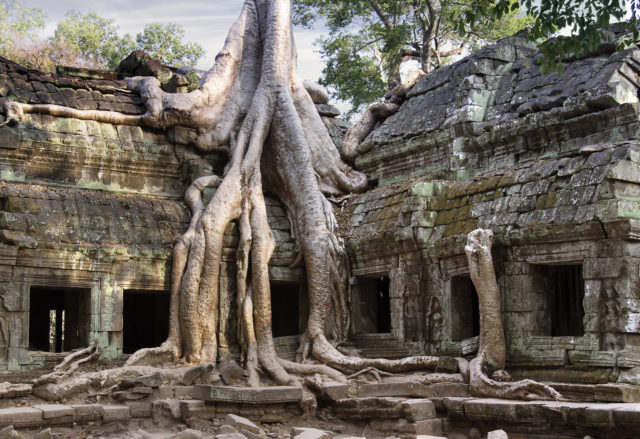
The state in which the jungle had overtaken the temple was irreparable. Silk-cotton and strangler fig trees had pushed their roots through the loose stone, and vegetation grew all over. A massive tree took over the center of the site, seemingly pouring its roots over the walls like tentacles.
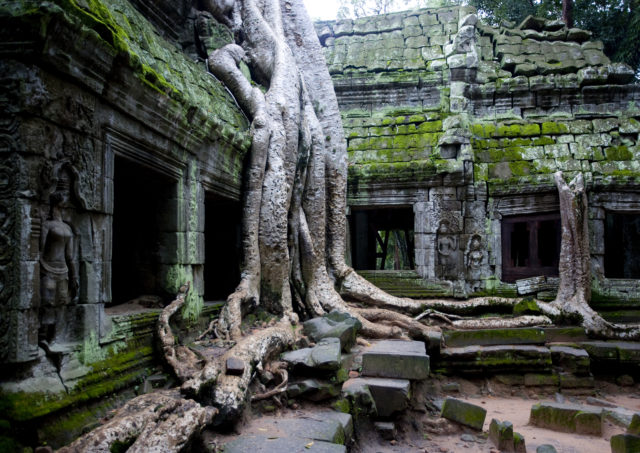
Instead of trying to reverse the jungle’s overgrowth, it was decided that maintenance, not restoration, was the best method in regard to preserving Ta Prohm’s unique beauty. The Archaeological Survey of India began maintenance on the temple in 2013, adding wooden walkways, platforms and rope fencing to allow tourists to safely visit the site.
The “Tomb Raider Tree” and the stegosaurus… Or rhinoceros?
One of the reasons Ta Prohm has become such a popular tourist site is not just its unique beauty, but also because it heavily featured in the 2001 film, Lara Croft: Tomb Raider. Filming was done at the temple itself, and the tree that’s overtaken the center of the site has now earned a reputation for being the “Tomb Raider Tree.”
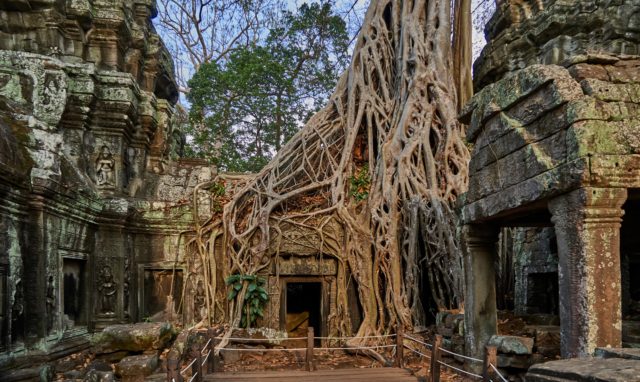
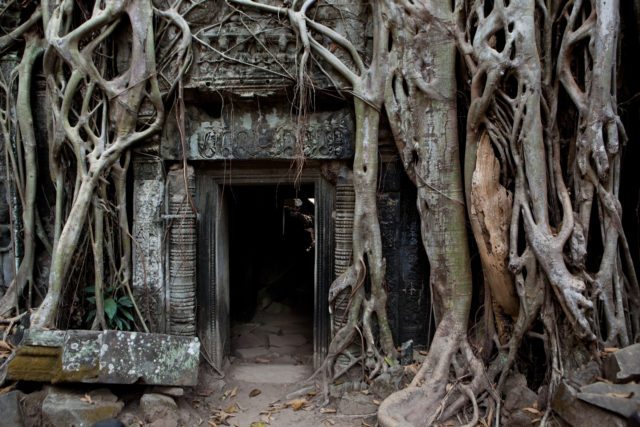
Another feature of the temple that’s piqued interest is the “stegosaurus” carving located in one corner. There are two perceptions of the carving that add to the allure of Ta Prohm. One theory suggests the carving is proof that those living in the Khmer Empire were aware of dinosaurs. The other states that the carving is actually that of a rhinoceros or boar standing in front of a leafy background.
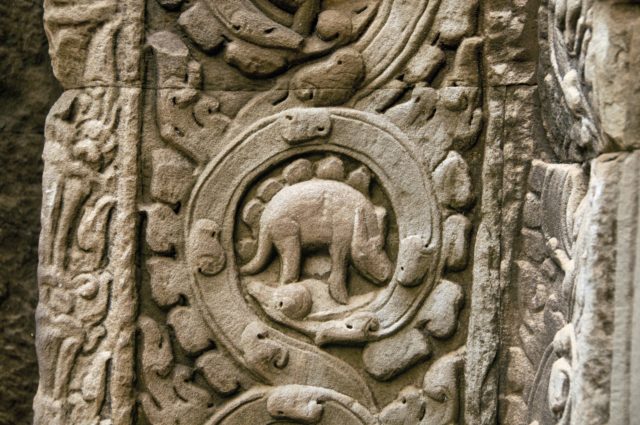
More from us: Stunning Renovations That Brought Decaying Historic Buildings Back to Life
Either way, King Jayavarman VII was able to create a remarkable temple that has more or less lasted the test of time, and is now arguably more beautiful, thanks to the forces of Mother Nature.
